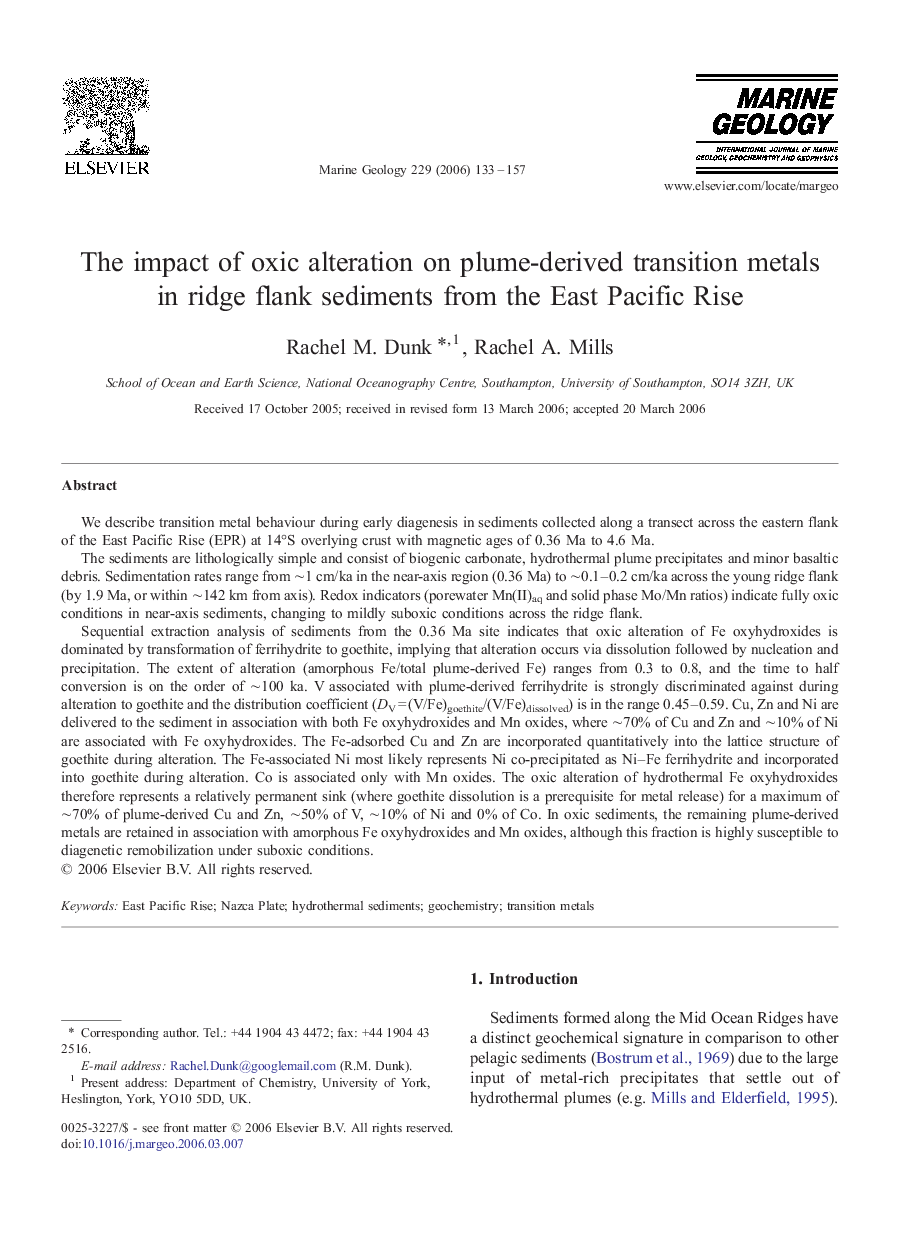| کد مقاله | کد نشریه | سال انتشار | مقاله انگلیسی | نسخه تمام متن |
|---|---|---|---|---|
| 4719827 | 1639211 | 2006 | 25 صفحه PDF | دانلود رایگان |

We describe transition metal behaviour during early diagenesis in sediments collected along a transect across the eastern flank of the East Pacific Rise (EPR) at 14°S overlying crust with magnetic ages of 0.36 Ma to 4.6 Ma.The sediments are lithologically simple and consist of biogenic carbonate, hydrothermal plume precipitates and minor basaltic debris. Sedimentation rates range from ∼1 cm/ka in the near-axis region (0.36 Ma) to ∼0.1–0.2 cm/ka across the young ridge flank (by 1.9 Ma, or within ∼142 km from axis). Redox indicators (porewater Mn(II)aq and solid phase Mo/Mn ratios) indicate fully oxic conditions in near-axis sediments, changing to mildly suboxic conditions across the ridge flank.Sequential extraction analysis of sediments from the 0.36 Ma site indicates that oxic alteration of Fe oxyhydroxides is dominated by transformation of ferrihydrite to goethite, implying that alteration occurs via dissolution followed by nucleation and precipitation. The extent of alteration (amorphous Fe/total plume-derived Fe) ranges from 0.3 to 0.8, and the time to half conversion is on the order of ∼100 ka. V associated with plume-derived ferrihydrite is strongly discriminated against during alteration to goethite and the distribution coefficient (DV = (V/Fe)goethite/(V/Fe)dissolved) is in the range 0.45–0.59. Cu, Zn and Ni are delivered to the sediment in association with both Fe oxyhydroxides and Mn oxides, where ∼70% of Cu and Zn and ∼10% of Ni are associated with Fe oxyhydroxides. The Fe-adsorbed Cu and Zn are incorporated quantitatively into the lattice structure of goethite during alteration. The Fe-associated Ni most likely represents Ni co-precipitated as Ni–Fe ferrihydrite and incorporated into goethite during alteration. Co is associated only with Mn oxides. The oxic alteration of hydrothermal Fe oxyhydroxides therefore represents a relatively permanent sink (where goethite dissolution is a prerequisite for metal release) for a maximum of ∼70% of plume-derived Cu and Zn, ∼50% of V, ∼10% of Ni and 0% of Co. In oxic sediments, the remaining plume-derived metals are retained in association with amorphous Fe oxyhydroxides and Mn oxides, although this fraction is highly susceptible to diagenetic remobilization under suboxic conditions.
Journal: Marine Geology - Volume 229, Issues 3–4, 30 June 2006, Pages 133–157